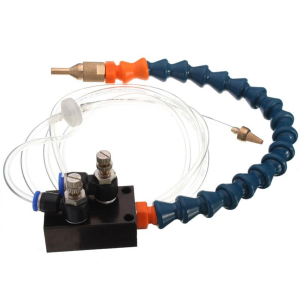- Joined
- Jul 2, 2014
- Messages
- 7,594
Flood coolant performs best, but it is a huge mess, gets stinky after a while, leaves stuff sticky, promotes rust if you do not keep after it, and just is not worth it, IMHO, in a hobby shop. I use cutting oil or fluid, or mist coolant. My mist coolant hardware is from China, cost $13.45 delivered, and does not make fog, it makes droplets. It works great. For what a Fog Buster costs it should be gold plated. If it works well, then fine.
The charts are developed for everything working right at the edge, on big rigid machines, to make a profit. That is important in competitive business. In hobby work, we set the pace, are not likely to make a lot of money at it, and so we set our own pace for our own enjoyment. For me, that means keeping costs down. I do not want to see how fast I can run an end mill, I want to see how long I can run it before sharpening it, with good results.
The charts are developed for everything working right at the edge, on big rigid machines, to make a profit. That is important in competitive business. In hobby work, we set the pace, are not likely to make a lot of money at it, and so we set our own pace for our own enjoyment. For me, that means keeping costs down. I do not want to see how fast I can run an end mill, I want to see how long I can run it before sharpening it, with good results.

